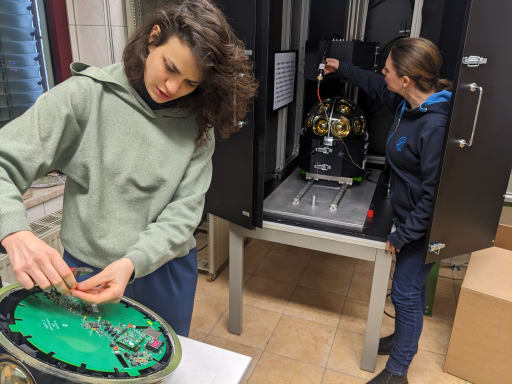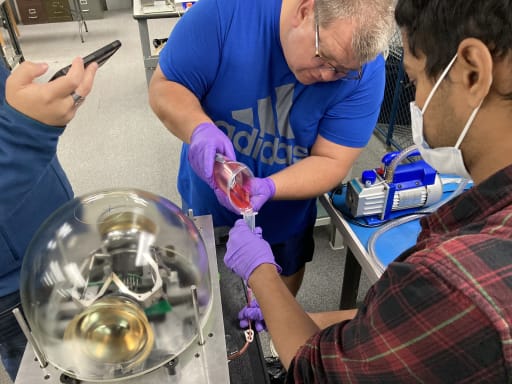The design and construction of IceCube-Gen2
IceCube-Gen2 represents a major scientific and technological challenge to be orchestrated through an international collaboration. The team integrates groups with extensive experience in various technologies and equipment needed to build what will be one of the largest scientific infrastructures in the world.
Over the next decade, this collaboration will design, build, and deploy around 18,000 optical and radio sensors along with a high-speed mobile drill that will bore through the Antarctic ice sheet at speeds of up to three meters per minute while maintaining the highest quality and safety standards that more than a decade ago allowed IceCube to be built on time, on budget, and without any major safety incidents.
IceCube-Gen2 technology design is already well advanced. The IceCube Upgrade project, currently underway, provided the ideal opportunity to organize and energize the IceCube-Gen2 design teams, from optical sensors to drill operations. The deployment of the IceCube Upgrade strings is expected during the 2025-2026 austral summer at the South Pole. Seven new strings will be drilled into the inner core of the IceCube Neutrino Observatory, creating a denser instrumented detector that will improve the low-energy capabilities of this multipurpose facility as well as its pointing and energy resolution.


The following list includes some of the technological advances in progress that already anticipate the future needs of IceCube-Gen2.
- A more mobile, high-speed drill, designed to optimize the energy and logistics resources to build IceCube-Gen2. This work is led by the University of Wisconsin–Madison, in a collaboration between the Wisconsin IceCube Particle Astrophysics Center (WIPAC) and the Physical Sciences Lab (PSL).
- The optical sensor design builds on an evolution of the sensors from IceCube—called DOMs—to those of the IceCube Upgrade—mDOMs and D-Eggs. The IceCube-Gen2 sensor will consist of 16 or 18 PMTs placed into an elongated glass pressure housing of narrow diameter. The mDOM design and construction is led by collaborators in Germany, including teams at DESY, the Erlangen Center for Astroparticle Physics, the University of Münster, and the University of Mainz. D-Eggs were designed and built in Japan by a team at Chiba University. The IceCube-Gen2 optical sensor design is based on a broad collaborative effort with significant contributions by the University of Wisconsin-Madison and Chiba University.
- Newly designed surface detectors to be deployed on top of the optical array have been developed and tested by teams at KIT Karlsruhe in Germany as well as at the University of Delaware and the University of Wisconsin–Madison in the U.S.
- The extensive radio array will be based on the expertise built around the new Radio Neutrino Observatory Greenland (RNO-G) project, currently under construction, which itself Is based on a long list of pioneering efforts by ANITA, the Askaryan Radio Array (ARA), and ARIANNA, and now IceCube-Gen2. Substantial contributions to RNO-G are being made by teams at the Université libre de Bruxelles (ULB) and the Vrije Universiteit Brussel in Belgium as well as many other groups in the radio community.
- New calibration concepts have also been developed by the University of Alabama in the U.S. as well as RWTH Aachen and the Technical University of Munich in Germany.
The IceCube-Gen2 project is co-led by the University of Wisconsin–Madison in the U.S. and DESY in Germany. In addition to the R&D work detailed above, teams from all participating institutions, 63 in 15 countries, conduct scientific simulations and analyses that underpin the design of each of the IceCube-Gen2 detectors.

